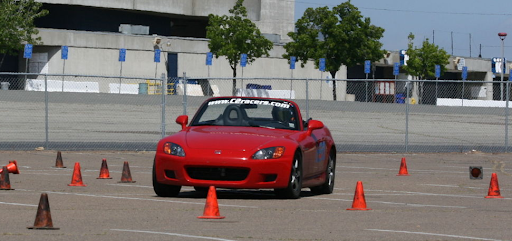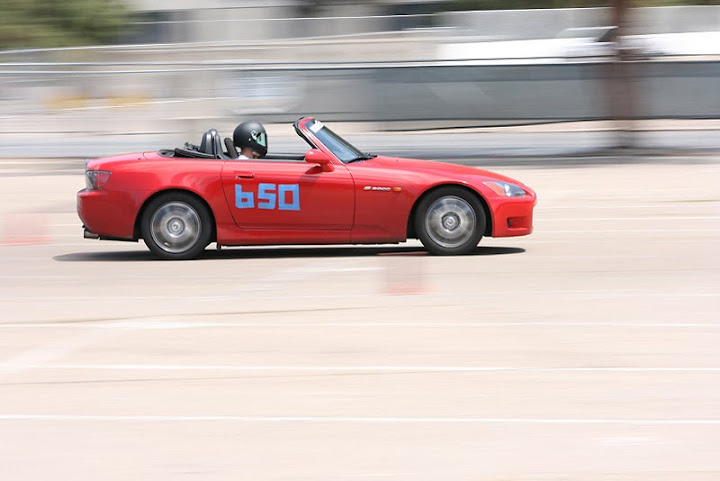‘Damping’ Enthusiasm

I’m barreling down the back straight of PCA’s autocross course at El Toro, chasing redline in second. Ahead is the final right-left-right complex before the finish markers, broad entrances and exits masking a nasty tightening-radius transition through the middle left. I stand on the brakes, feed the car right, roll on the power, lift slightly and flick the wheel back left and the car’s mass continues right momentarily before heaving left, the tail instantly loose, leaving me watching the approaching finish line in the rearview mirror.
This minor misadventure was the result of an amateur mistake, upgrading to R-compound tires while retaining the stock suspension. The rapid transitions combined with the increased lateral acceleration provided by the stickier tires had resulted in body movements and suspension travel outside the design limitations of the stock dampers, forces and displacements which could not be controlled.

The role of the damper in automotive suspension is, at its most basic level, to limit the acceleration of the body of the car and control the movements of its wheels. Every change of elevation of the track surface, steering input, or application of power or brakes induces acceleration of these masses. In order to allow the wheels to move separately from the body, each is articulated independently via a series of linkages and springs. When subjected to acceleration, these springs oscillate. Without a damper acting in the same direction, this oscillation would, theoretically, continue until another external force produced a different one. This is less than ideal for control (or grip). If you’ve ever seen a car with blown shocks bouncing incessantly as it drives over a relatively smooth surface, you’ve seen this principle in action.
In practice, systems without a dedicated damper still experience damping forces (friction and drag). The damper, as we know it, harnesses these forces to achieve a precisely calibrated effect when matched to a known spring rate and known masses.
A basic automotive damper uses the force exerted by the accelerating masses to drive a piston, which pumps fluid through a series of valves. Because hydraulic fluid is incompressible, the rate at which fluid can be moved (and the piston travels) is determined by the pressure exerted by the piston. It is always less than the rate at which the mass would move if it were not constrained. When no other forces are acting on the damped mass, the oscillations from the acceleration previously experienced are rapidly reduced as the kinetic energy of the mass works to move the fluid in the damper.
That’s an awful lot of theory. So what does it translate to in practice?
In order to maintain control of your car’s masses, damping rates need to be well matched to the forces they will experience. A car which has larger masses, stiffer springs, and/or undergoes higher accelerations will generally require higher damping rates. If your dampers are too soft, you will experience the scenario described above as the masses are not kept within their designed set of behaviors. If your dampers are too stiff, they will impede the ability of the springs in your suspension to keep the tires in contact with the road. Grip and handling will suffer. Also, you will suffer as the car will ride like an oxcart.

The next time you’re looking to purchase suspension parts for your S2000, keep dampers in mind. Choosing a setup based solely on spring rates may not yield the result you intended. Lowering springs may compromise handling if paired with OEM dampers as they are generally stiffer. Swaybars are springs too, so the same rule applies. Look for a setup from a reputable manufacturer willing to provide a shock dynamometer graph for each individual unit in the set you’re looking to buy.
Don’t be the guy finishing the lap backwards in a cloud of tire smoke.
Images courtesy of Ted Witte and Gavin Rennie
